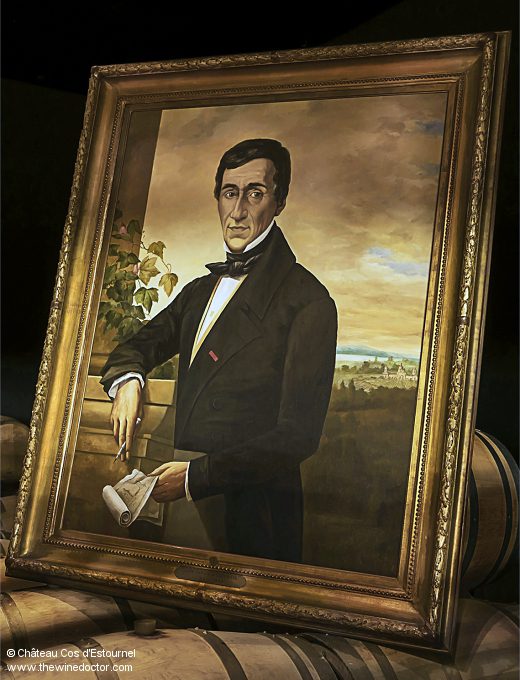Château Cos d’Estournel: Louis Gaspard d’Estournel
We begin with the birth of Louis Gaspard d’Estournel, in January 1762, to a family from Quercy, a region to the south of Bordeaux which is perhaps more readily associated with wines such as Cahors than with claret. His origins are of significance, however, if we are to also understand the origin of the name of this château. For this information I am indebted to Clive Coates, who wrote in Grand Vins (University of California Press, 1995) that Cos is most likely to be a derivative of caux, itself derived from colline de cailloux, meaning ‘stony slope’. Although in French the terminal consonant in caux is silent, in the Gascon tongue the end consonant is most certainly vocalised, accounting for how caux may mutate into cos (the ‘s’ is pronounced) over the years.
In 1791, when Louis (pictured) was just 29 years old, he inherited the family estate consequent upon the death of his father, Guy d’Estournel de Maniban. Over the ensuing years he added other lands to his holdings, acquisitions which included Pommies, today known as Château Pomys, a cru bourgeois estate, and some other vineyards, all in the commune of St Estèphe. At the time this latter purchase was perhaps unexpected; after all, most of the great vineyards of the Médoc were already established, and they were further south, in Pauillac. St Julien and Margaux. St Estèphe was yet to be fully exploited though, as evidenced by the later appearance of Château Montrose which only came into being in the early years of the 19th century, hundreds of years after some other comparable deuxièmes crus. Perhaps Louis Gaspard d’Estournel saw some hitherto unrecognised potential in the gravelly soils of the commune.

